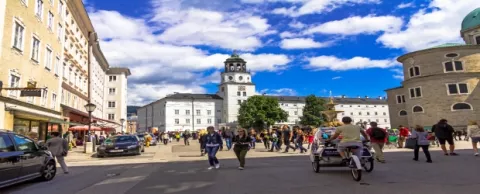
Austria’s fourth-largest city, Salzburg, may be known for its charming medieval and baroque buildings (as well as being the birthplace of famous composer Mozart), but the city is making a name for itself in the region as a leader in Smart Grids and electric mobility. Home to a population of nearly 150,000 people, this mid-sized city is making a major impact in terms of climate protection projects and emission-reducing solutions. Here are some of the key ways Salzburg plans to meet its energy-saving goals to become a smart city by 2050.-Bruno De Man
Carbon neutral goals
By 2050, Salzburg plans to reduce energy consumption per capita by 30 percent and increase locally produced renewable energy by 8.8 percent. One of the key projects underway: Stadtwerk Lehen (Lehen Municipal Utility), an urban district composed of nearly 300 apartments, shops, a kindergarten, hostel and Life Science office complex. This “energy-optimized district” is considered an international model due to its power-control system that records and monitors energy consumption. Solar collectors, a buffer storage tank, and a low-temperature microgrid help supply this district, as well as the neighboring Strubergassensiedlung residential complex (which has been retrofitted with modern technology), with heat. Salzburg is also in the process of creating smart districts such as the Smart District Gnigl, which will be transformed into an education campus with sustainable buildings and a central station for mobility services. Home to a clubhouse and primary school dating back to the 1920s, the city plans to consolidate these structures to form a new campus, which will serve as a flagship energy project, according to Energy Innovation Austria. As part of its plan to convert buildings to carbon-neutral status, Salzburg is testing out projects in 1970s settlement Goethesiedlung in the Itzling district, where an eco-friendly building is being constructed to serve as a nursing home. While there are a number of plans in place for new technology and districts, Salzburg is also monitoring electricity, water, and heat daily in 300 public buildings, which has helped reduce consumption and generate data for the city to later use as part of a larger power-saving plan. According to the city’s Action Plan, all new housing developments (and 25 percent of existing buildings) will be “smart grid viable”; electric vehicles will offer delivery services in the city center, and municipal vehicles will be biogas-friendly. With these solutions in place, Salzburg’s projects can be implemented in other parts of Austria helping the country achieve national goals for energy consumption.



